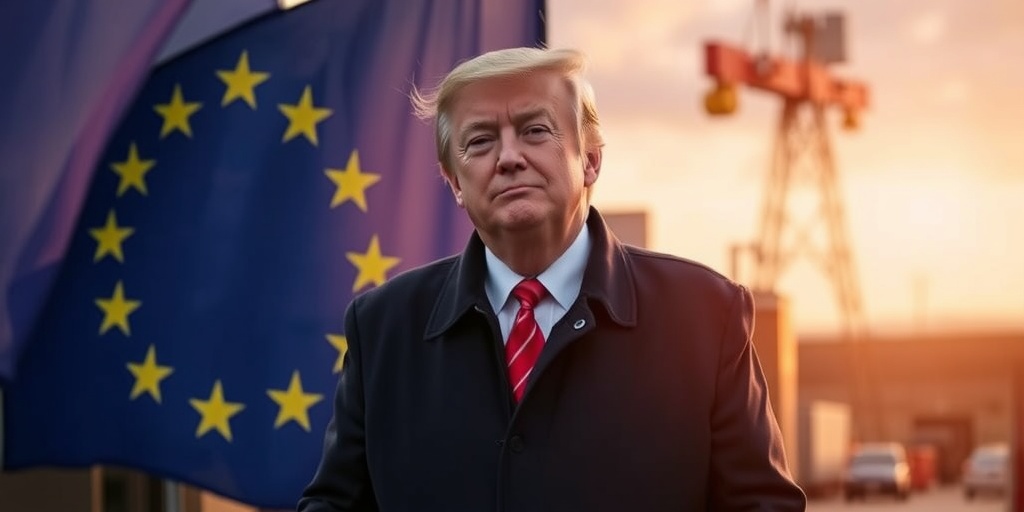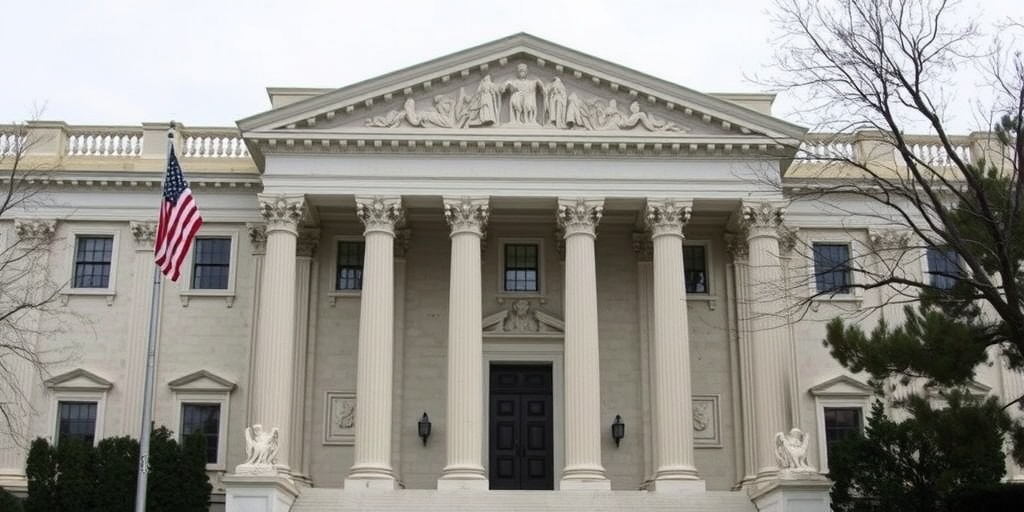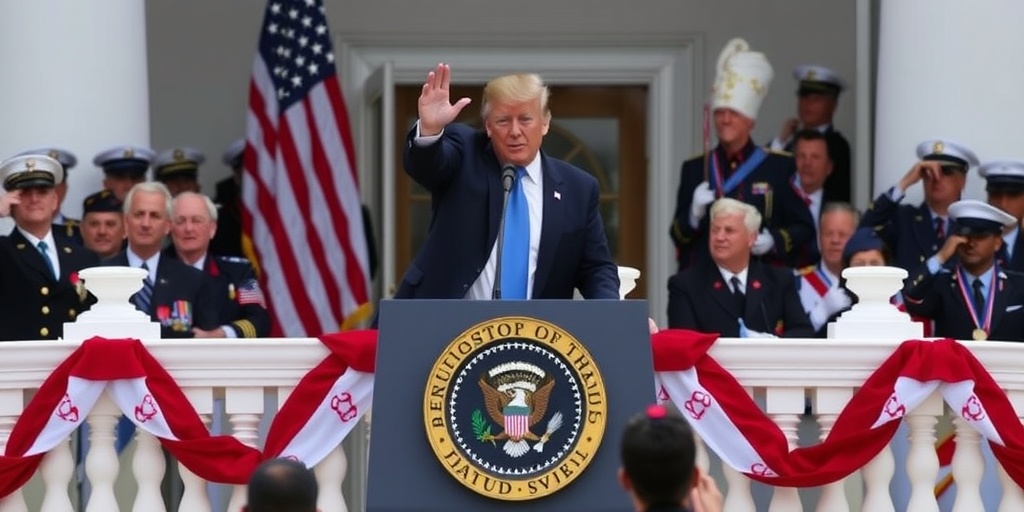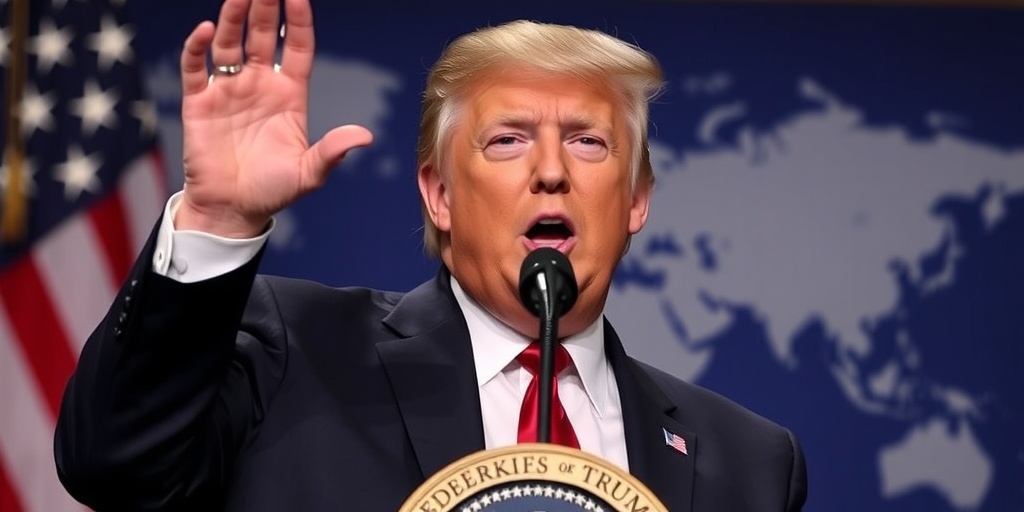Now Reading: European Strategies to Combat Trump’s Tariffs
-
01
European Strategies to Combat Trump’s Tariffs
European Strategies to Combat Trump’s Tariffs

In light of the escalating trade tensions between the European Union (EU) and the United States, European officials are exploring potential measures to impose restrictions on imports of American services. This move comes as a strategic response to President Trump’s recent tariffs on key goods such as aluminum, steel, cars, and auto parts, which threaten to destabilize an already fragile European economy. Ursula von der Leyen, the President of the European Commission, emphasized the EU’s capacity to retaliate against these tariffs, stating, “We have the power to push back.”
The trade conflict has its roots in President Trump’s aggressive trade policies, reminiscent of the trans-Atlantic tensions he sparked during his first term. In retaliation to the tariffs imposed by the U.S., the EU has indicated its intention to reintroduce levies on various American imports, including iconic products like Harley-Davidson motorcycles and whiskey. This retaliatory measure underscores the mounting friction between two of the world’s most significant economies.
To counter the impact of Trump’s latest tariffs, the EU is contemplating the use of a policy tool known as the anti-coercion instrument—a measure that some have dubbed a “bazooka” due to its formidable nature. Although this instrument was officially adopted in 2023 as a way to combat coercive economic practices from countries like China, it has yet to be utilized. European officials view it as a last resort if diplomatic discussions with the Trump administration fail to yield a favorable outcome.
Brussels is considering deploying this anti-coercion toolkit primarily against major American technology firms and financial institutions. One of the more drastic proposals under consideration involves restricting American banks’ access to the EU’s public procurement market, which is valued at an impressive €2 trillion ($2.2 trillion) annually. This measure would effectively sever American banks from access to numerous lucrative projects across the EU, significantly impacting their operations.
Moreover, the preliminary discussions also suggest targeting the substantial investments that Europeans make in American companies each year—a flow of approximately €300 billion that has become a point of contention for EU officials. Additionally, the EU may contemplate increasing tax and regulatory burdens on American digital platforms, further intensifying the economic strife.
While the specific details and implementation strategies of these proposals remain vague, the discussions reflect a comprehensive approach by EU policymakers as they navigate their negotiating stance. Fabrizio Pagani, a partner at the investment bank Vitale and a former economic official in the Italian government, expressed his belief that the anti-coercion tool should serve primarily as a deterrent. He advocates for its visibility in negotiations to strengthen the EU’s bargaining position.
A spokesperson for the European Commission, Olof Gill, noted that the anti-coercion instrument is indeed being evaluated as part of Brussels’ negotiation strategy. He pointed out that while the EU has achieved a notable trade surplus in goods with the U.S., it still faces a significant trade deficit in services, amounting to approximately €110 billion. Advisors believe that capitalizing on this disparity could be crucial in forthcoming negotiations.
However, not everyone within the economic community views this hardline approach as prudent. Some analysts caution against the potential backlash of such aggressive negotiating tactics. Joachim Klement, the head of strategy at the investment bank Panmure Liberum, warned that imposing tariffs on services—similar to those on goods—would negatively impact both consumers and businesses directly. He posited that this strategy could further escalate the already tense trade war, stating, “You are just putting fuel on the stagflationary fire.”
In summary, as the EU grapples with the implications of Trump’s tariffs, its officials are evaluating a range of contentious measures to exert pressure on American entities. The potential deployment of the anti-coercion instrument reflects the EU’s commitment to defending its economic interests. However, the repercussions of such measures warrant careful consideration, as they could lead to unintended consequences that exacerbate the ongoing trade conflict and economic challenges for both sides. As negotiations unfold, the outcomes of these discussions may have lasting effects on transatlantic trade relations.
Stay Informed With the Latest & Most Important News
Previous Post
Next Post
-
 01New technology breakthrough has everyone talking right now
01New technology breakthrough has everyone talking right now -
 02Unbelievable life hack everyone needs to try today
02Unbelievable life hack everyone needs to try today -
 03Fascinating discovery found buried deep beneath the ocean
03Fascinating discovery found buried deep beneath the ocean -
 04Man invents genius device that solves everyday problems
04Man invents genius device that solves everyday problems -
 05Shocking discovery that changes what we know forever
05Shocking discovery that changes what we know forever -
 06Internet goes wild over celebrity’s unexpected fashion choice
06Internet goes wild over celebrity’s unexpected fashion choice -
 07Rare animal sighting stuns scientists and wildlife lovers
07Rare animal sighting stuns scientists and wildlife lovers





















